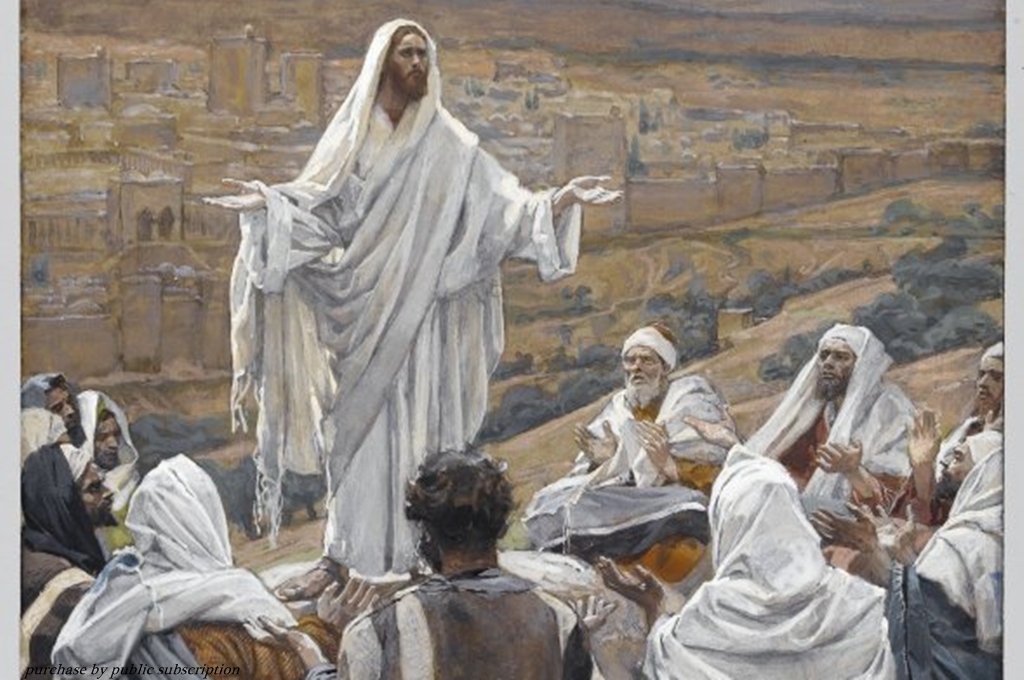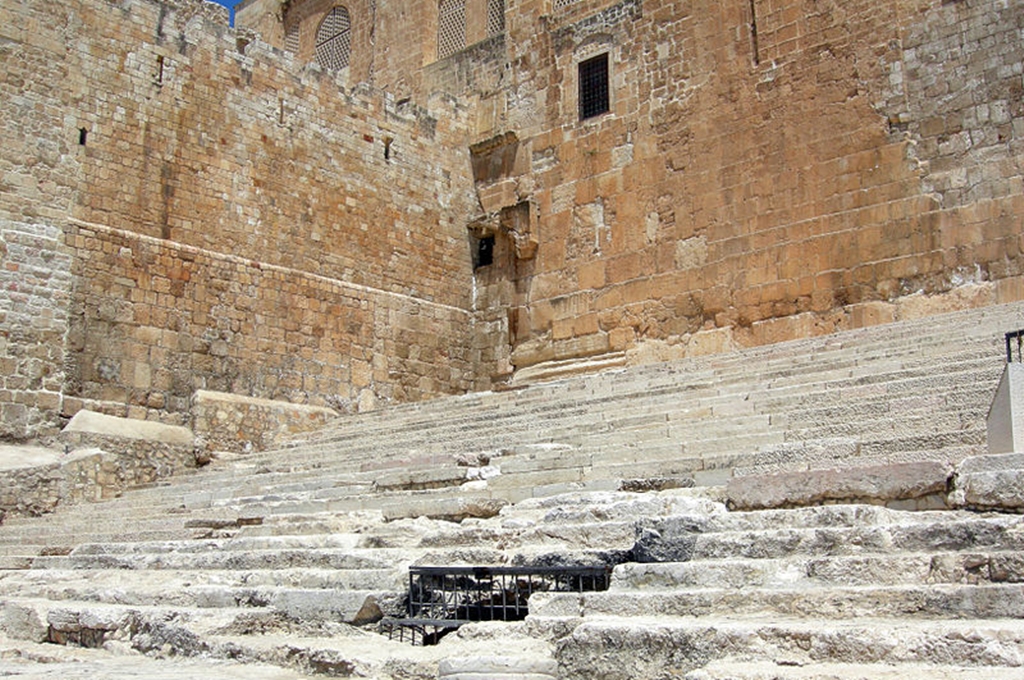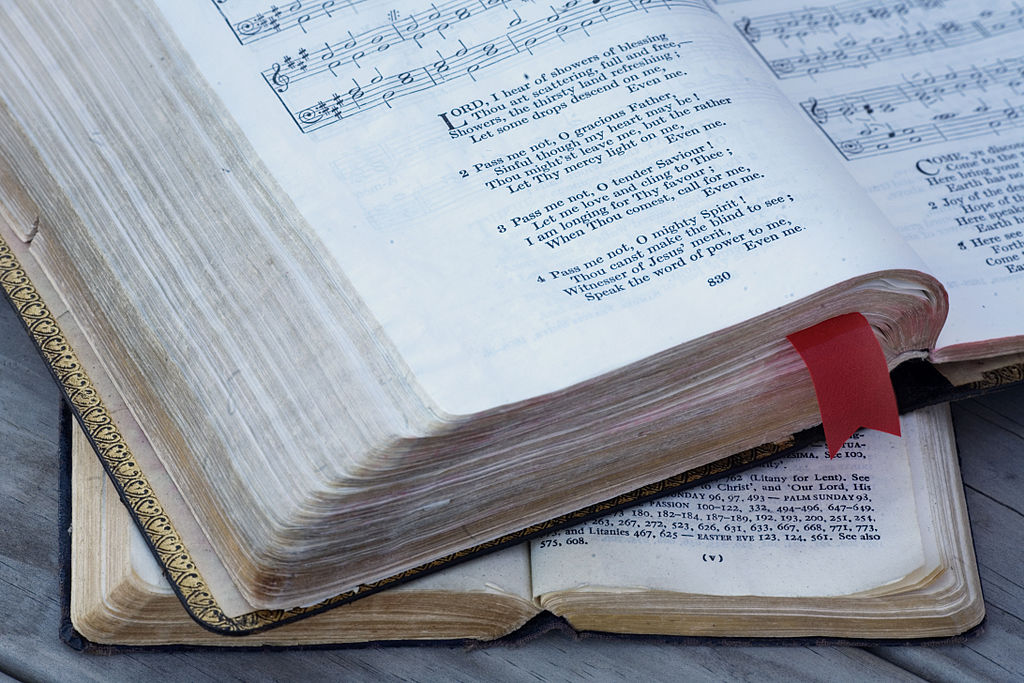I am constantly looking for different ways to engage my students in prayer and worship. Here is a unique prayer station experience focused on the Lord’s Prayer that was developed to put our own student ministry spin on our lead pastor’s six-week series on the Lord’s Prayer.
With our middle school students, we had small groups go around to each station together with a leader who guided them through the process and read the instructions to them. With our high school students, we had each student do it alone, following the explanations printed up nicely at each station for them to read. Each station contained a puzzle piece; when all pieces were collected, they fit together to form the Lord’s Prayer in the student’s own words (download the puzzle piece graphic here.). I hope you can use some of these ideas within your own ministry context. Comment below with any other creative ideas you have done for prayer stations!
LORD’S PRAYER STATIONS
Note: Each group may go to the stations in any order, except that Station 0 is first, and Station 6 is last (those two will be done in the big group; the others are done in small groups). Stations 1-5 take the following format:
NOW: The youth will be invited to reflect on their current ideas or experiences.
NEW: Youth will be introduced a new way of looking at this part of the Lord’s Prayer, either through presentations, questions, or activities.
NOW WHAT? The youth will rewrite a portion of the Lord’s Prayer in their own words (try not to help them, except to clarify the instructions or explain the meaning of a word or concept from the original text). They will write their prayer onto a puzzle piece and keep it with them throughout the experience. After your group has been to all six stations, gather in the center of the room and tell your group to put the puzzle together in order.
0 – Teach us to pray (meet as a large group)
Materials: A Sharpie for each person.
Now: Leader shares an experience of being “bad at praying.”
New: Read Luke 11:1-4. We, like the disciples, are constantly criticizing our own prayer life compared to Jesus’ awesome prayer life. We notice some specific elements in Jesus’ prayer that make His so meaningful, and we will have the chance to experience them tonight.
Now What? Explain the stations and puzzle pieces. (It may help to assign each group or person the station in which they need to start in order to stagger traffic to the stations. If you do it individually, remind students not to overcrowd stations; perhaps you could set up a reflection spot somewhere nearby for students to wait their turn at a station without being distracting.)
1 – Our Father, Who art in heaven, hallowed be Thy name
Materials: Index cards, Bible, rug.
Now: Grab an index card. Write down the first three words that come to mind when you think about your dad. Know that you won’t have to share these cards with anyone else and put it in your pocket.
New: The Lord’s Prayer starts with the words “Our Father, Who art in heaven” because God considers us His children, and He wants to have a relationship with us. It’s a very personal way of addressing God . . . and because of that, our own memories or feelings towards our earthly dads often have an influence on the way we view God. If you are really close to your father, then you might imagine God as someone who wants to go out in the backyard and play with you. But if your dad has not been a big part of your life, or if you have a bad relationship with him, then it might be easy to think of God as distant and uncaring.
But the truth is God is a good Father . . . better than any earthly father we could possibly imagine. He loves us very much and wants the best for us . . . and He wants to be in a relationship with us! So even if you have a hard time identifying with the image of God as your Father right now, you still need to be encouraged by who He is. Look up and read these verses in the Bible: Psalm 68:5; Luke 11:11-13; Psalm 103:13.
Now What? How would you rewrite the beginning of the Lord’s Prayer, “Our Father, Who art in heaven, hallowed be Thy name”? Write it on the puzzle piece and take it with you.
2 – Thy Kingdom come, Thy will be done, on earth as it is in Heaven
Materials: Table with chairs around it, butcher paper as tablecloth, colored pencils and markers.
Now: When God looks down at the world that He has created, what do you think He wishes He could change? What would be going on in a perfect world? Draw a picture of what that might look like on the butcher paper.
New: The Lord’s Prayer says, “Thy kingdom come, Thy will be done, on earth as it is on Heaven.” The kingdom is the place where the word of the king is respected and obeyed. When we live lives of obedience, reverence, and awe of God, we bring the kingdom to earth.
Now What? Rewrite this part of the Lord’s Prayer in your own words on the puzzle piece and take it with you.
3 – Give us this day our daily bread
Materials: Bread, table with chairs around it, Bibles.
Now: Have you ever had the experience of having one if your prayers answered? Do you think it is easy or hard to ask for the things you need? What about the things you want? Do you think it’s okay to pray for material things? Why or why not? Does this kind of prayer “work”? Is it worth your time? Do you think it’s okay to pray for health? Happiness? To win the lottery?
New: Take a piece of the bread and eat it. The Lord’s Prayer says, “Give us this day our daily bread.” What do you think that means? What is our daily bread? We need food to fulfill our physical needs. What is our “daily bread” in a spiritual sense? Could it be that we need hope/love/patience/strength/relationships to get through the day just as much as we need food? Do you believe God has given you what you need? Look up and read 2 Peter 1:3.
Now What? Rewrite the phrase, “Give us this day our daily bread,” on the puzzle piece and take it with you.
4 – Forgive us our debts, as we forgive our debtors
Materials: An area that you can block off with caution tape yet allow space for students to cross over to get to an open area with a welcome mat in the center.
Now: A debt is something we owe someone else and a debtor is someone who owes us something. When we have debt it means that we’ve taken something we couldn’t get on our own. In the context of the Lord’s Prayer, it means sin. We sin and are indebted to God and other people for our faults against them, and we need forgiveness. At the same time, other people have wronged us and need us to forgive them, too.
Other versions of the Lord’s Prayer say, “Forgive us our trespasses, as we forgive those who trespass against us.” Trespass implies that we’ve crossed a boundary . . . we’ve gone too far . . . etc. Sometimes, we cross the limits God has given us; other times, we cross the lines with another person. Either way, a sin is a sin!
New: As you sit around this welcome mat think about the times you have taken something that you shouldn’t have (someone’s self-esteem, your own pleasure rather than God’s, etc.). The truth is, we all cross the line sometimes . . . even when we’re not trying to. And other people cross OUR lines, too.
Close your eyes for a second, and think about some of the ways you have NOT done what God wants you to do, and confess those sins to God. Think about the wrongs people have done to you. With the same desire and passion for God to forgive you, so must you forgive those who wronged you. Remember this good news: In the name of Jesus Christ, you are forgiven!
Now What? Rewrite this part of the prayer on the puzzle piece and take it with you: “Forgive us our debts, as we forgive our debtors.”
5 – Lead us not into temptation, but deliver us from evil
Materials: Blank slips of paper, fire in a campfire, fireplace, or bbq pit.
Now: Temptation . . . and evil . . . come in all forms, big and small. Temptation could happen for you in deciding which party to go to. Or, maybe someone has done something mean and hurtful to you, and you really want to get back at the person, even though the right thing to do would be to forgive and let it go. Or, maybe when your alarm goes off on Sunday morning, you start to wonder if it really matters whether you skip church this time; after all, you need your sleep! Temptation is about facing choices, when the thing you really want to do is not what God wants you to do.
Take a slip of paper and write down some of the temptations that you’ve faced in the last week, as well as some of the temptations that you think you might face in the week ahead. When you are finished fold your paper in half.
New: Jesus faced temptation too! He spent 40 days in the desert without eating and was tempted by Satan. Jesus never gave into the temptation, though. It must have been so difficult for Him, especially when Satan tempted Him to turn a rock into bread so that He could eat.
As a sign of repentance, throw your temptation paper in the fire and watch it burn away. Pray this prayer after it has burned away: God, I need to make the right decisions when faced with temptation. Today I commit myself to Your plan and purpose as I try to live out my faith. Amen.
Now What? Rewrite the phrase, “Lead us not into temptation, but deliver us from evil,” on the puzzle piece and take it with you.
6 – For Thine is the kingdom, and the power, and the glory forever and ever. Amen. (meet as a large group)
Materials: Worship music (Doxology by David Crowder Band)
Now: Worship together with the song Doxology by David Crowder.
New: When we say the Lord’s Prayer in church, we usually add a section at the end called the doxology, which is not found in the original scripture. The word “doxology” means, “hymn of praise,” and early Christians added the words, “For Thine is the kingdom, and the power, and the glory forever and ever. Amen,” to the end of the prayer that Jesus gave them, so that they could take a minute and remember who God is and honor Him, adore Him, and admire Him. The song we just sang is an old hymn sung in thousands of churches called the Doxology.
Now What? On your last remaining puzzle piece, write your own doxology of praise. Once you are finished, put your puzzle piece together so that it is in the correct order of the Lord’s Prayer.
Let us first pray the Lord’s Prayer in its original form. Now, let us pray the words that you’ve written. We’re all going to read our prayers out loud at the same time, even though it might sound jumbled from the outside. It’s not a contest to see who can speak the loudest; it’s just our chance to all pray the same thing at the same time although the words are different. If you finish before someone else, just keep your head bowed until everyone else is done.
Pray. End with the song Manifesto by The City Harmonic.




